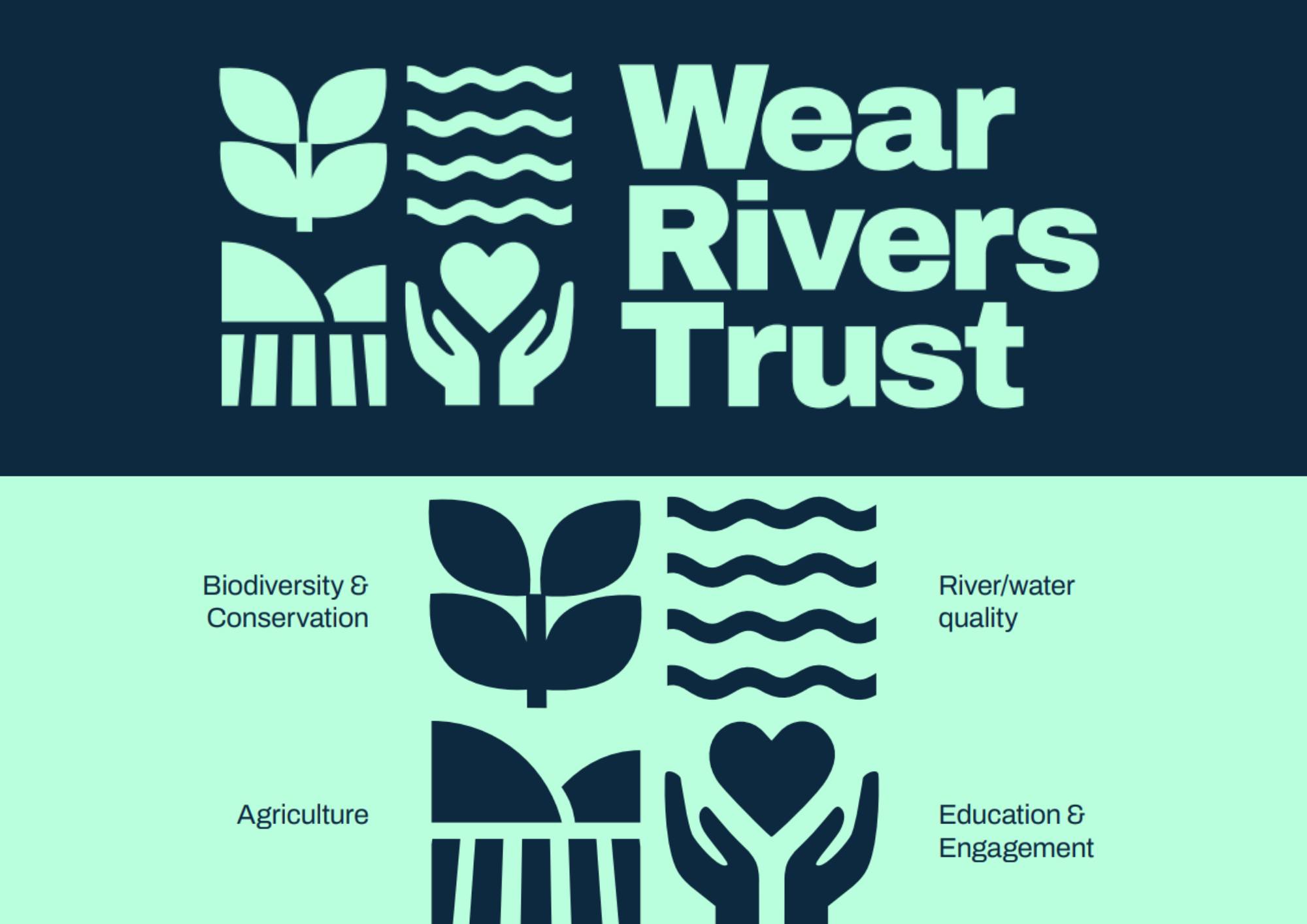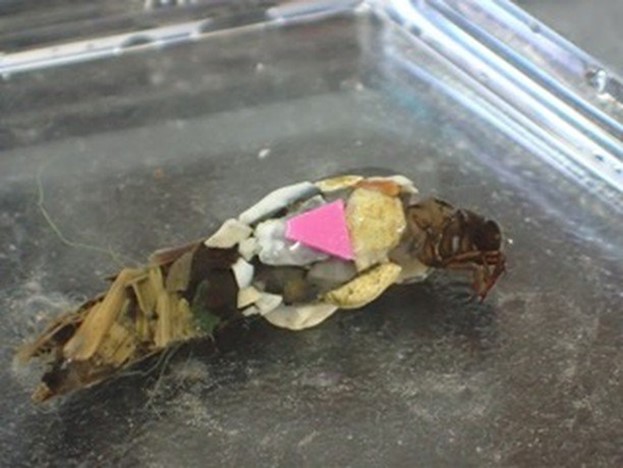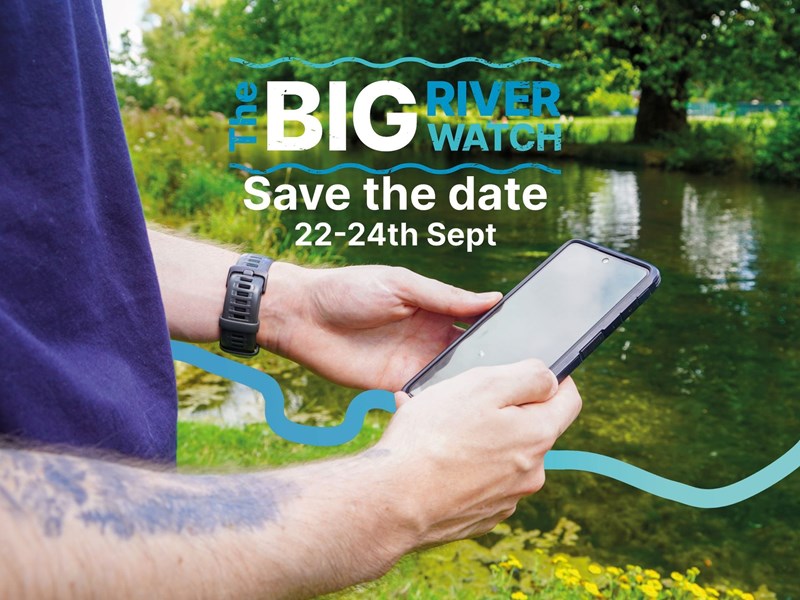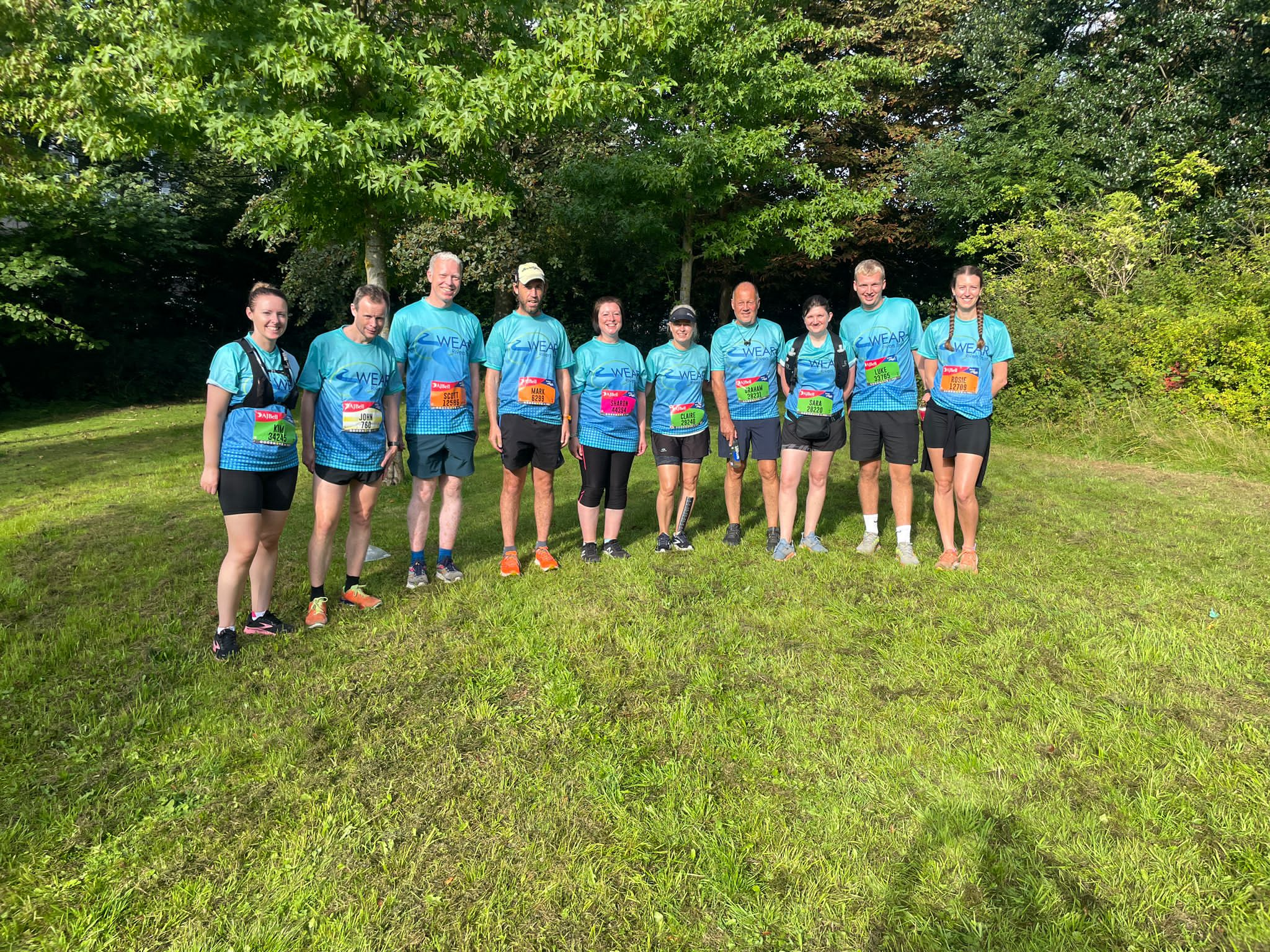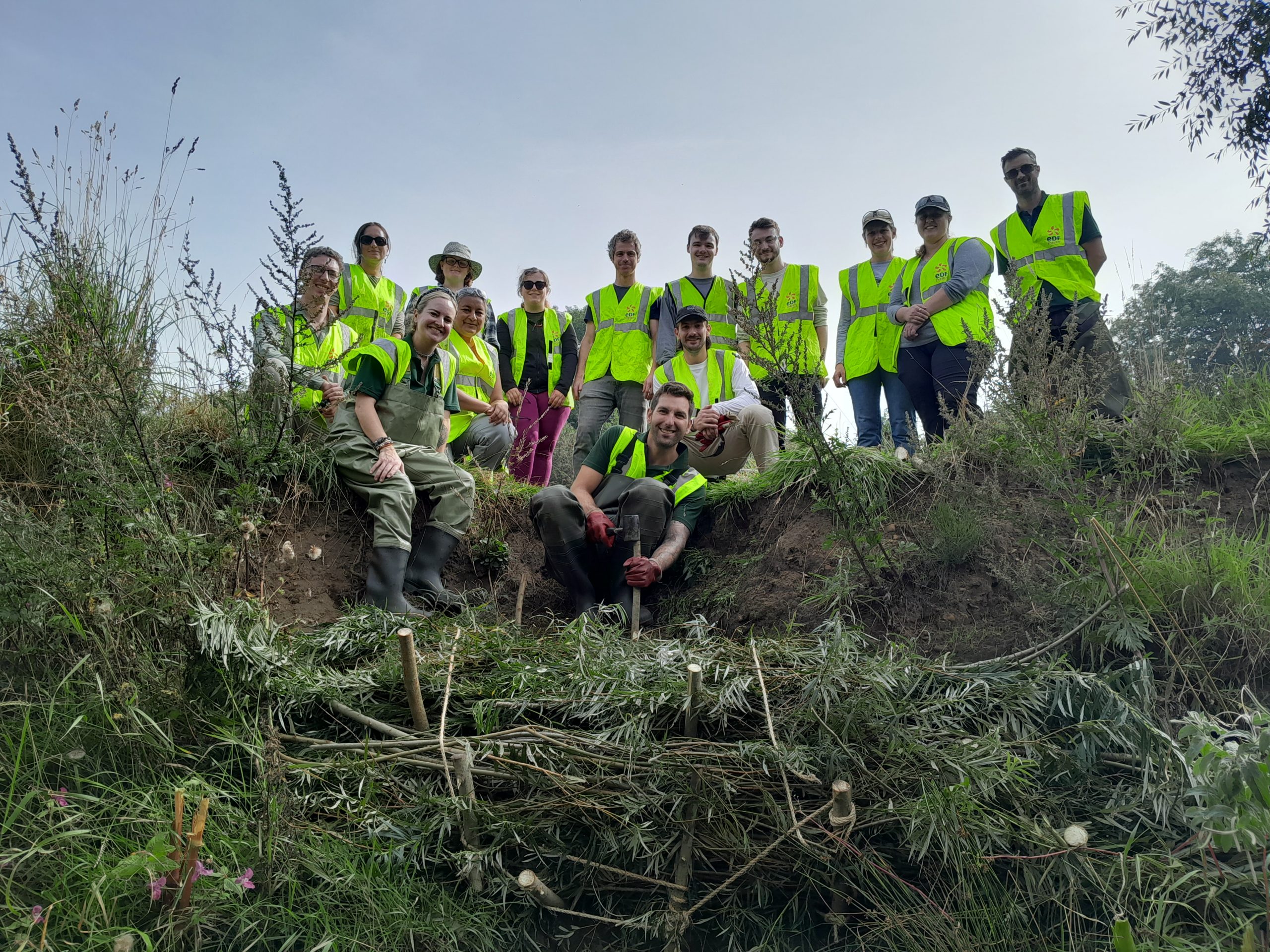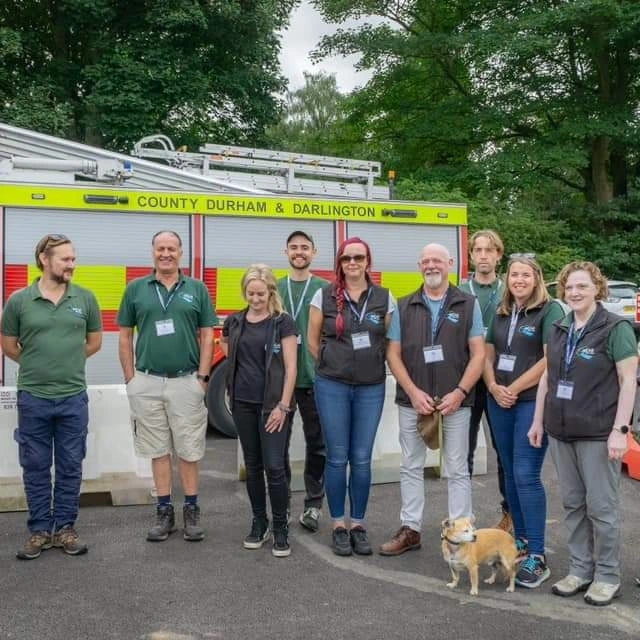Category: News
Wear Rivers Trust has rebranded!
Today the Wear Rivers Trust unveiled its new brand identity, logo, and tagline. The Trust has undergone a complete brand refresh to reflect its current position and offering to the market.
The new branding represents the growth of the Trust over the last decade conserving, protecting, rehabilitating, and improving the landscape and watercourses within the Wear catchment.
The new tagline ‘Wear Conserving’ illustrates that the Trust is is striving to continue to develop our key goal, to conserve the Wear Catchment and beyond.
The future of the Wear Rivers Trust lies in the capacity to deliver more projects on a larger scale. With a growing team of experts under new leadership, which will see the Trust move in a wider direction.
The original logo has carried the Trust on a journey over the last decade, the time has now come for a rebrand to reflect the recent changes whilst paying homage to the Trusts origins:
– Biodiversity and Conservation
– River/Water Quality
– Agriculture
– Education and Engagement
Commenting on Wear Rivers Trust’s rebrand, Chief Operating Officer, Kirstie Hutchinson said:
“The team and I are extremely excited to unveil our new brand externally today! The rebranding reflects the recent changes at the Trust and represents our ambitions, whilst recognising how the Trust has evolved over the years. We feel it is important to let people know what Wear Rivers Trust stands for and our new identity and tagline ‘Wear Conserving’ signifies our future growth. We hope you all like it as much as we do!”
From everyone here at the Wear Rivers Trust, we thank you for your continued support! #wearconserving#wearriverstrust
Exciting news WRT is rebranding!
WEAR RIVERS TRUST ANNOUNCES REBRAND LAUNCH
Today Wear Rivers Trust has internally unveiled its new brand identity, logo, and tagline. The Trust has undergone a complete brand refresh to reflect its current position and offering to the market.
The new branding represents the growth of the Trust over the last decade conserving, protecting, rehabilitating, and improving the landscape and watercourses within the Wear catchment. The new tagline ‘Wear Conserving’ illustrates that the Trust is striving to continue to conserve the whole of the Wear catchment and beyond.
The future of the Wear Rivers Trust lies in the capacity to deliver more projects on a larger scale with a growing team of experts under new leadership, which will see the Trust move in a wider direction.
The original logo has carried the Trust on a journey spanning the last decade, the time has now come for a rebrand to reflect the recent changes whilst paying homage to the Trusts origins:
- Biodiversity and Conservation
- River/Water Quality
- Agriculture
- Education and Engagement
Commentting on Wear Rivers Trust’s rebrand, Chief Operating Officer, Kirstie Hutchinson said:
“The rebrand reflects the changes at the Trust and represents our ambitions, whilst recognizing how the Trust has evolved over the years. We feel it is important to let people know what Wear Rivers Trust stands for and our new identify and tagline ‘Wear Conserving’ signifies our future growth.”
The new branding will be rolled out over the coming weeks with an external launch date planned for the 1st May 2024.
Info
Wear Rivers Trust is an environmental charity formed in 2008, The mission of the Trust is to conserve, protect, rehabilitate, and improve the landscapes, rivers, streams, watercourses of the Wear catchment covering Weardale, middle Wear and adjacent estuarine and coastal areas. The Trust is part of a national movement of 65-member Trusts headed by the umbrella organization The Rivers Trust.
Charity Number: 1094613
Website: wear-rivers-trust.org.uk
Christmas Card Competition
Calling all photographers…
Wear Rivers Trust are holding a competition to find the best River Wear (or Wear tributary) Winter themed photograph to feature on our 2023 Christmas Card.
We know the weather isn’t too chilly just yet… so feel free to send us one of your photographs from previous years. Or get creative and try to create the best Wintery-feeling photograph of the River Wear now!
The closing date is 27th November and the frost is on it’s way so there’s plenty of time to get out snapping around the river. Not only will the winner have their photograph featured on the Christmas Card but they will also receive a £50 voucher from Camera World. The runners up will automatically be entered for the chance to appear on the Wear Rivers Trust 2025 calendar which we will be organising next year.
Please send all entries to volunteering@wear-rivers-trust.org.uk.
We will be showcasing some of the entries on our social media so if you don’t already please follow:
Facebook: Wear Rivers Trust
Instagram: wear_rivers_trust
X (Twitter): WearRiversTrust
The Scourge of Plastic Pollution
Peter Nailon, WRT Strategic Funding Director, has given recent talks on the scourge of plastic pollution to the Heritage Coast Partnership Annual Form https://durhamheritagecoast.org and the North East Share business group https://northeastshare.co.uk/
Plastics breakdown into tiny particles, polluting the environment at the micro and nano-scales, even entering the human food chain.
Caddis fly larvae build a case to pupate in, from the materials close to hand, gathering stones, sand and leaves, and wrapping them with silk. In the case of the cover photo the caddis fly has incorporated small pieces of hard plastic into the structure of its cocoon, clearly illustrating the scale of the plastics problem.
Peter described how communities, schools and businesses could get involved through the Wear Plastic Free initiative, operating across the whole catchment.
If you want to make the Wear Plastic Free and support action on plastic pollution perhaps through suggesting ways to reduce plastic use, or improve recycling at work, get involved in clean-ups or support the plastics management with a financial donation please contact admin@wear-rivers-trust.org.uk

Appointment of Chief Operating Officer and Strategic Funding Director at Wear Rivers Trust
After a very competitive recruitment process Kirstie Hutchinson, currently Office and Business Development Manager, has been appointed as the new WRT Chief Operating Officer, Kirstie will formally take up her new role from 1st October 2023.
Kirstie commented: ‘I am deeply honored and thrilled to have the opportunity to take up the reins here at Wear Rivers Trust as Chief Operating Officer, building on the solid foundations achieved by my predecessor Peter Nailon. I have inherited a fantastic, knowledgeable team that I will lead to continue the growth of the Trust. As we move forward my focus will be building on developing collaborative and positive relationships with stakeholders, partner organisations and communities as we continue to strive to improve the health of our rivers.’
Peter Nailon will take up the transitional role of Strategic Funding Director from 1st October 2023 as part of a phased retirement process, supporting Kirstie as she progresses from Chief Operating Officer to Chief Executive Officer over the next 12 to 18 months.
‘Big River Watch’
22-24th September – Big River Watch Launch
This is your chance to make a difference…
This weekend of 22-24th September sees the exciting launch of the ‘Big River Watch’ and Wear Rivers Trust needs your help!
The Big River Watch is a national scheme and is asking volunteers across the country to get out and report back on their local rivers; the animals, the plants, the pollution and everything in between. This will help us to capture a national insight into the health of our rivers and will give us valuable data to help us protect the health of our waterways!
Whether you’re a swimmer or a paddler, an angler or a rambler, a wildlife spotter or a sit-and-watch-er, this is a chance to be part of the movement improving our freshwater spaces!
To get involved simply download the free ‘Big Rivers Watch’ app to your smartphone. Then choose a spot on a river or stream near you and spend 15 minutes observing your watercourse. Using the simple steps on the app, tell us what you have seen! And then click the button to upload your survey.
Surveys can be carried out on as many rivers as you are able to visit and as many times as you wish, there will be something new to see each time! And they can be carried out at any time of the year, not just for our coming launch weekend.
Please take photos and upload onto social media using the hashtag #bigriverwatch and tag Wear Rivers Trust so that we can all share in each other’s river explorations!
Taking part in the Big River Watch will not only provide valuable data to help protect our vulnerable rivers but it will also offer an opportunity to boost your wellbeing. Studies show that being in the great outdoors allows us to make a deeper connection with nature, dissolve stress and anxiety, boost our serotonin and improve our overall physical health.
How will the collected survey data make a difference?
Rivers are suffering from sewage, plastic, chemical and nutrient pollution. To change this, we need to know where our rivers are having the problems and which problems are the most prevalent. The free and open Big River Watch survey is your chance to make a difference. Data gathered during Big River Watch can support policy change; helping turn the tide on plastics or stem the flow of untreated sewage. It also helps identify the best places for river clean-ups, or the creation of things like wetlands.
If you have any questions or would like further information on the Big River Watch please contact jade.harley@wear-rivers-trust.org.uk.
Wear Rivers Trust does the Great North Run!
Yesterday we had a team of ten out running the Great North Run for Wear Rivers Trust including members of staff, members of the Trustee Board, and staff and Trustees family and friends. Our runners did a brilliant job and had some fantastic personal best running times. Other members of the staff team were on the course to cheer the runners on!
Our runners were John Donneky with a time of 1hr 27 mins, Mark Davinson with a time of 1hr 36 mins, Scott Laight with a time of 1hr 44 mins, Rosie Wowk with a time of 1hr 45 mins, Luke Forster with a time of 2hrs 14 mins, Claire Wilkie with a time of 2hrs 23 mins, Kim Hardy with a time of 2hrs 29 mins, Sharon Barton with a time of 2hrs 39 mins, Graham Bell with a time of 2hrs 48 mins and Sara Bell with a time of 2hrs 48 mins.
Between them they raised a fantastic amount of £2,004 for the Trust to aid the great work we do in and around the River Wear and its tributries.
Fantastic effort from all involved, a big well done!

